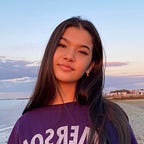Does the 21st Century fashion industry still have a diversity issue?
With fashion being a multi-billion dollar industry, it has unfortunately fallen victim to the Eurocentric beauty standard and the idea of tokenism for decades. More prominent fashion brands make diversity and inclusivity seem like a chore. However, with fashion constantly progressing and the world just becoming a more racially and ethnically diverse place overall. I can see a more diverse and inclusive future for the continuously moving fashion industry.
Cultural appropriation.
Many designers in the industry have faced cultural appropriation accusations for years now. Unfortunately, it’s still an issue in contemporary culture. It continues to affect minority groups. Marc Jacobs, a renowned high fashion brand, had white models like Gigi and Bella Hadid and many more walk down the runway in wigs of dreadlocks during his Spring 2017 Collection. While one demographic experiences racism and prejudice for having this hairstyle, another demographic are seen as high fashion and couture for wearing them on the runway. Having non-black models wear the hairstyle as an accessory honestly just signifies that the brand does not have enough black models to walk the show. This is an issue that contributes to the lack of diversity on the runway.
The Eurocentric beauty standard and tokenism.
It’s no big news that western fashion has an extensive and lucrative history of being an exclusively white industry. As mentioned before, catwalks are usually dominated by white models. I believe it all ties back into the widely enforced Eurocentric beauty standard. Models with light hair, light eyes, and Anglicized features are so widely represented in today’s exceptionally racially diverse world.
New York Fashion Week, arguably the world’s biggest fashion event disclosed that its participating models were 82.7% white, 6% Black, 9% Asian, and 2% Latino (2018). Purely based on that insufferable but not surprising statistic. We know that people of colour are seen as tokens for the brand to appear more ‘diverse.’ Additionally, diversity applies to many more differences other than race. To be a diverse brand, you need to also consider gender, body type, physical abilities, and many other elements that make us humans.
Turning point?
I may sound very critical and deprecatory of the industry. While I am, to an extent. In the past year, there have been racial justice topics such as the Black Lives Matter movement and the racism Asian Americans experience because of xenophobia due to the coronavirus pandemic. Because of that, the idea of racial inclusivity has been implemented and promoted through the industry in recent months, thankfully.
In January 2020, Netflix debuted a new show, “Next In Fashion.” Hosted by Alexa Chung and Tan France. The winner of the show was Minju Kim, a South Korean fashion designer. Because Netflix is so mainstream and its original shows usually gain massive popularity. I was very pleased to see an East Asian designer win. The show allowed the representation of up-and-coming designers, particularly ethnic minorities. Seeing more media coverage on underrated non-white designers in the industry is a breath of fresh air. It’s especially nice to see those who pull references from their cultures.
Furthermore, the British Fashion Fashion Council now has a new Diversity & Inclusion Steering Committee. London is one of the fashion capitals of the world. This is such a progressive step to ensuring a more diverse and inclusive London Fashion Week.
Is there something that WE can do?
We, as consumers, have a powerful position. We can use it to help dictate the future of fashion. Though we have already established that the industry is rather elitist and has had questionable decisions regarding diversity. Victoria’s Secret in 2018, for example. They had a problem casting transgender and plus-size models for their annual show (which has since been cancelled) because they wouldn’t embody the ‘fantasy’ of the show. The brand has since been critiqued for its transphobic/fat-phobic comment. This happened because of the mass media backlash that the remark got.
Likewise, as the consumers, you and I can put brands like these under scrutiny and ensure that they don’t get to grow into such large-scale trademarks. We have a powerful tool called social media. It gives us a powerful voice and acts as a form of communication between our favourite brands and us. Ultimately, we must constantly provide input and demand for inclusion in such a wide diverse world, particularly regarding such an influential multi-billion dollar industry.
I have hope for the 21st Century to become a turning point for fashion regarding diversity in all aspects.
-Zara Karlieva
Thanks for reading this article! Make sure to comment your thoughts and questions. Please make sure to follow Karlieva to explore more articles on women’s success stories in all areas of life!
To support us in creating quality and meaningful multimedia you can donate to our PayPal
Feel free to follow our other social media:
